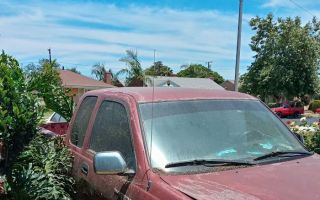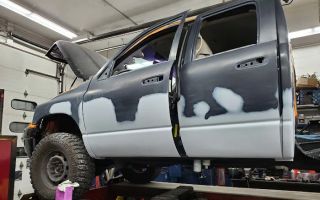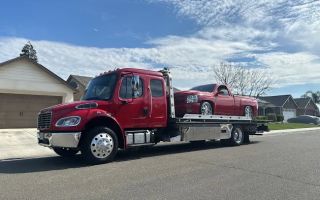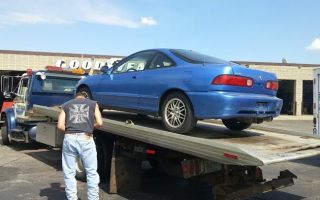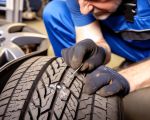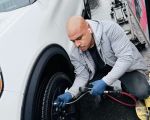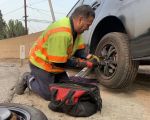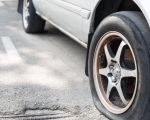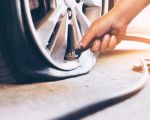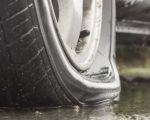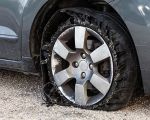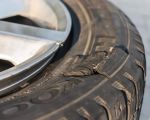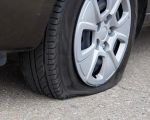Should You Drive with a Slow Leak or Fix It Right Away?
I've been in that frustrating situation before: driving along and suddenly noticing that my tire seems a bit low on air. At first, it might seem like a minor issue—after all, the leak is slow, so it’s not like it’s going to cause a flat immediately, right? However, the more I’ve learned about tires, the more I realized that even a slow leak can lead to significant issues down the line. In this article, I’ll share my personal experience with slow leaks, the risks of driving with them, and why it’s often a better idea to fix the problem right away instead of putting it off. If you’ve found yourself wondering whether it’s safe to drive with a slow leak, keep reading for a more in-depth look at the issue.
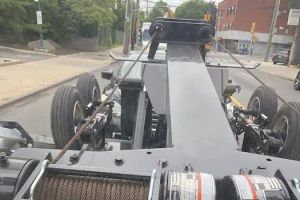
Nissan of Queens Body Shop
85-24 Rockaway Blvd, Ozone Park, NY 11416, USA
1. What Is a Slow Leak and How Can You Detect It?
A slow leak is exactly what it sounds like: a tire that loses air over time but not rapidly. I remember the first time I noticed a slow leak in one of my tires. I’d been driving for a few days with what seemed like no issues, only to notice that the tire pressure light on my dashboard was coming on occasionally. I took the car to the mechanic, and sure enough, there was a small puncture in the tire that was letting air out very slowly.
Slow leaks can be tricky because they don’t immediately manifest as a flat tire. For the most part, the tire pressure decreases gradually, which is why I didn’t notice it right away. This subtle deflation can be due to a number of factors:

Drive Car Studio
8765 Bradley Ave, Sun Valley, CA 91352, USA
1.1 Small Punctures
Small punctures are one of the most common causes of slow leaks. In my case, it was a tiny nail that got stuck in the tread of my tire. The puncture wasn’t big enough to cause an immediate flat, but over time, it let air escape slowly. I didn’t notice it until I felt the tire’s performance start to deteriorate. Small punctures like these are easy to overlook but can lead to bigger issues if left unaddressed.
1.2 Valve Stem Issues
Another cause of slow leaks can be a faulty valve stem, which is where you inflate the tire. I’ve had valve stem issues before, and it’s one of those things that isn’t immediately obvious. Sometimes, the valve stem might crack or become loose, causing air to escape over time. If you have trouble with tire pressure but no visible puncture, it could be a problem with the valve stem.
1.3 Rim Damage
Rim damage can also contribute to slow leaks. When my car hit a large pothole once, I didn’t realize that the impact had bent the rim slightly. Over time, this caused a slow leak where the tire didn’t seal properly. This is a more serious issue, as it may require replacing the rim or the tire itself, but it’s another factor that could cause a slow leak. Damaged rims aren’t always obvious, but they can lead to air loss over time.
2. The Risks of Driving with a Slow Leak
At first, driving with a slow leak might seem harmless. The leak isn’t big enough to cause an immediate blowout, and you might think you can just top off the tire every few days. That’s how I felt when I first experienced it. However, I quickly realized that continuing to drive with a slow leak can create several risks and potential hazards.
2.1 Reduced Fuel Efficiency
One of the first things I noticed when driving with a slow leak is that my fuel efficiency began to decrease. Underinflated tires have more rolling resistance, which means your engine has to work harder to maintain speed. I didn’t realize how much this would affect my gas mileage until I had to fill up more often than usual. A slow leak can cause your tire pressure to gradually decrease, and over time, you’ll notice it’s costing you more at the pump.
2.2 Tire Damage and Blowouts
Another risk I learned the hard way is that driving with a slow leak can lead to further tire damage and even a blowout. Tires that are underinflated due to slow leaks wear out unevenly and become more vulnerable to damage. I had a friend who once ignored a slow leak, thinking it wasn’t a big deal. Eventually, the tire became so worn down from the continued underinflation that it blew out on the highway, leaving her stranded and causing significant damage to her car. A slow leak might seem manageable at first, but the longer you leave it, the more dangerous it becomes.
2.3 Unsafe Driving Conditions
As I drove around with my slow leak, I began to notice that the car didn’t handle as well, especially at higher speeds. The decreased tire pressure can cause the tire to become less stable, leading to a loss of control, especially when driving at highway speeds or in inclement weather. In my case, I felt the car pulling slightly to one side when I made sharp turns. These changes in handling made me realize how dangerous it is to ignore a slow leak and drive with compromised tires.
3. Should You Fix It Right Away or Drive with a Slow Leak? Here’s What I Learned
When I first noticed the slow leak, I wasn’t sure what to do. Should I keep driving and just top off the air every few days? Or should I stop and fix the problem immediately? Here’s what I learned from my experience:
3.1 Fixing the Leak ASAP Prevents Bigger Problems
As tempting as it might seem to drive with a slow leak just a little bit longer, I quickly realized that it’s much smarter to fix the issue right away. The longer you drive on a slow leak, the more the tire will wear down, and the greater the risk of having to replace the tire completely. I decided to get my tire repaired right away, and I’m glad I did. The repair was much cheaper than replacing the entire tire, and I avoided the risk of further damage. Fixing the issue immediately also gave me peace of mind knowing I wouldn’t have to worry about a potential blowout while driving.
3.2 Regular Tire Inspections Are Key
One of the biggest lessons I learned from my slow leak situation is the importance of regular tire inspections. I didn’t check my tire pressure as often as I should have, which allowed the slow leak to sneak up on me. If I had regularly checked my tire pressure, I would have noticed the decrease in pressure before it became a bigger issue. I now make it a habit to check my tire pressure at least once a month, and I encourage others to do the same. Regular checks and quick fixes can save you from more costly and dangerous problems down the road.
3.3 The Role of Roadside Assistance
If you’re unsure whether you should drive with a slow leak, or if you’re unable to fix it yourself, calling for roadside assistance can be a great option. I’ve used roadside assistance a few times, and they were able to help with everything from inflating my tire to getting a replacement. If you don’t have roadside assistance as part of your car insurance plan, I recommend looking into it, especially if you often find yourself driving on highways or in remote areas where help isn’t always around the corner. Having this service available made a significant difference in handling my situation quickly and efficiently.
4. Conclusion: Fix the Leak Before It Becomes a Bigger Problem
While it might seem tempting to ignore a slow leak or just add air every few days, I’ve learned that it’s always best to fix the issue as soon as possible. The risks of driving with a slow leak far outweigh the temporary convenience of continuing to drive. Whether you decide to repair the tire yourself, visit a mechanic, or call for roadside assistance, taking action sooner rather than later can save you time, money, and stress. Your tires are a vital part of your vehicle’s safety, and it’s important to take good care of them to avoid further complications down the road.




